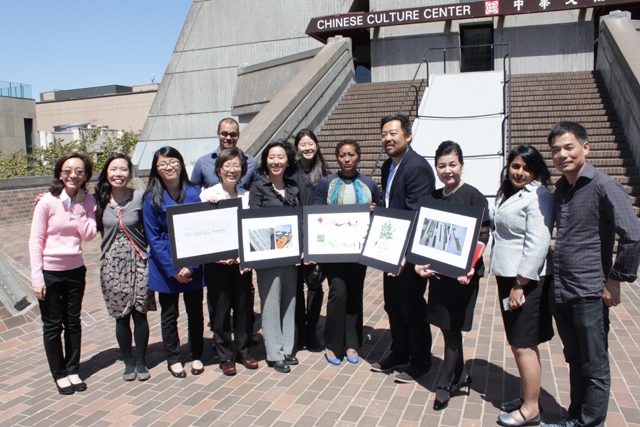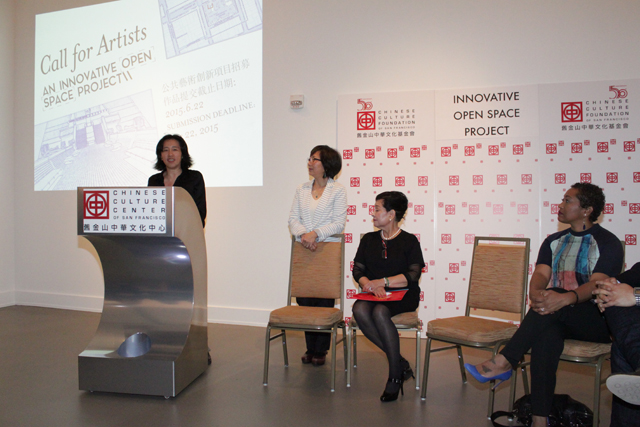The Chinese Culture Center of San Francisco (CCC), a 50-year-old arts organization lodged on the third floor of Chinatown’s Hilton, announced last week the launch of an “Innovative Open Space Project” combining a public art installation with landscaping. The target? The Portsmouth Square pedestrian bridge spanning Kearny Street, linking the Culture Center to Portsmouth Square Plaza.
The bland brick-covered bridge currently hosts two rows of concrete benches and not much else. For local skateboarders, the spot is legendary, but as far as bridges go, it’s not the most convenient pathway through the neighborhood (the bridge is only open during select business hours).

Proposals for the art portion of the bridge’s redesign are due by June 22, 2015. The project budget is a hefty $20,000, an amount that goes a bit farther if the selected artist or collaborative is local. Landscape designers Jennifer Ng and Christopher Hardy are responsible for bringing greenery to the bridge, which the CCC envisions as a “welcome retreat.”
For CCC’s artistic director and curator Abby Chen, a permanent installation on the bridge is the realization of a dream she’s had since she joined the organization in 2006. Temporary projects and performances over the past nine years kept the site active and paved the way for the current initiative. Now, with backing from a Community Challenge Grant and additional funds from the Hilton, the bridge can become what Chen has long envisioned, “a critical metaphor connecting Chinatown to the rest of the city.”
“A lot of times, community organizations don’t get to do innovate projects like this,” Chen said at last week’s press conference. The CCC has a deep roster of support even beyond funding, including a partnership with the Chinatown Cultural Development Center (CCDC) and oversight from a local advisory committee.

For Malcolm Yeung, deputy director of the CCDC, the bridge project is more than beautification: “It’s about engaging people in owning their community… so that in the future they’re adamant about making Chinatown a better and greater place. So they step forward in advocating for the neighborhood improvements that Chinatown needs.”
The bridge project hopes to reach beyond the neighborhood to reposition Chinatown as a contemporary cultural destination. CCC Executive Director Mabel Teng cited the historical importance of Portsmouth Square Plaza. The highly active gathering place for both old and young (one group seeks out card games, the other playground equipment) was the first public square in the early 19th-century Mexican community of Yerba Buena, predating even the name of “San Francisco.”
Chen, too, frowned at misconceptions about the neighborhood. There is a belief, she pointed out, that “this community doesn’t deserve the best quality art. This community doesn’t need contemporary art, nor does it have any.” She believes this project can bridge — literally — the immediate needs of the neighborhood and the desire for daring public art.
“Spiritually, idealistically, we are leading a new form of art production that is inclusive, but at the same time has its heart in the community,” Chen concluded.